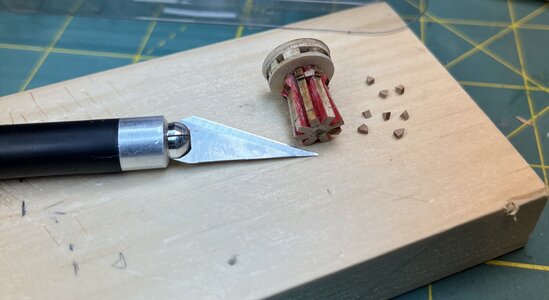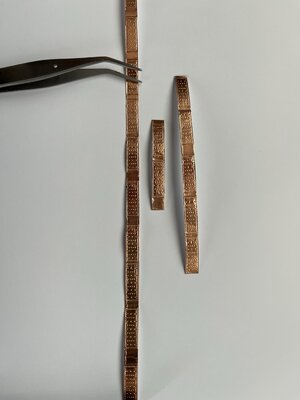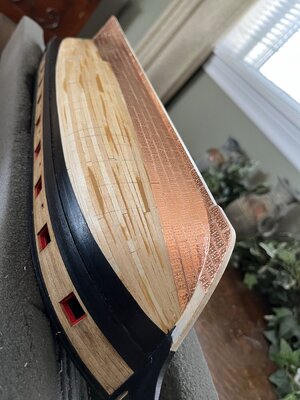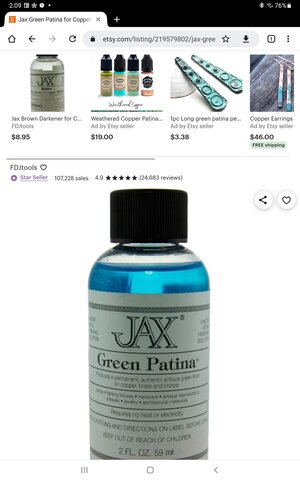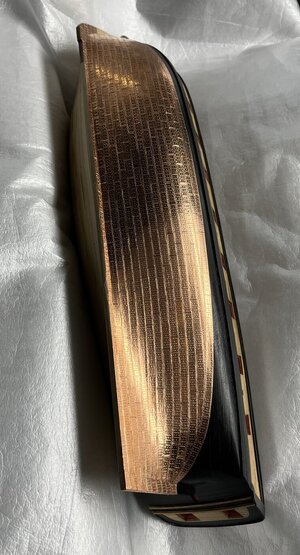For the copper sheathing on the Syren I decided to try indented copper tape, which I purchased from ZHL (Shicheng), China some months ago. There was some discussion on various methods of making the scaled plates on this build thread back in April last year. I ordered two rolls of tape each having 500 plates. However, I know already that I need at least another roll. I estimate wastage at about 5%, not forgetting this is my first go at this.
I am presently working my way up the hull, from the keel aft to the bow. The design of the nail pattern on the plates does not seem to allow for the recommended overlap but I made an effort to do this anyway. I was a little confused to start with the way the plates were embossed on the copper. Gaps between plates vary, as do the edges but cutting carefully means I can allow for a small bare patch, adjacent to the end of a plate, where it can be held with tweezers. A little bit of manipulation, a final trim and with care the plate can be affixed without touching it. A wipe with a small lint free cloth helps secure the plate before some light burnishing. A little more burnishing is going to be necessary later.
As I progress I am trying hard to align the plates using multiple pencilled lines on the hull. Some visual dexterity helps too. I’ve attached a photo to show the loose tape with varying separation distances and also one of the hull port side with progress so far. This is a long process as many of you know.
If I do a “Kattner Close-up” (
@dockattner)

with my phone camera I see areas I’m not happy with. However, from a distance it’s passable so this time a re-do is not a consideration.
As always your comments, input and critical observations are very welcome. Thanks for spending your valuable time reading this.
View attachment 353020
View attachment 353022




 .
.